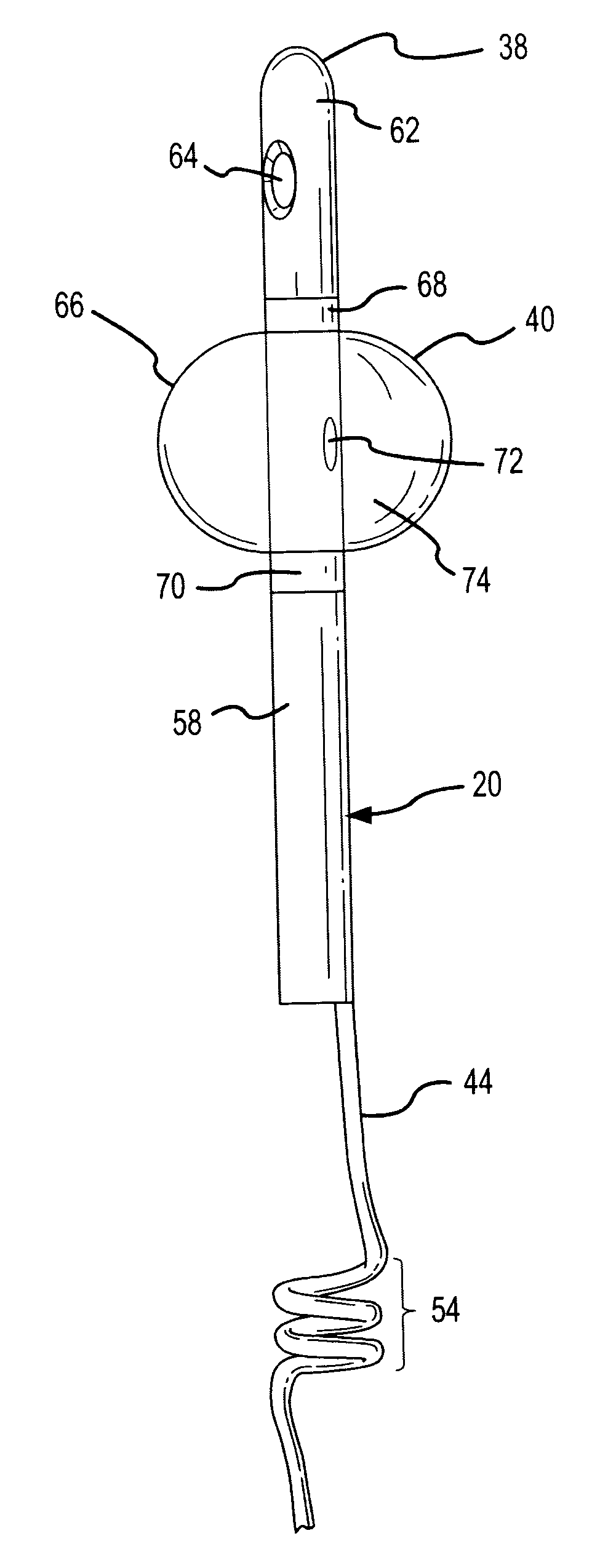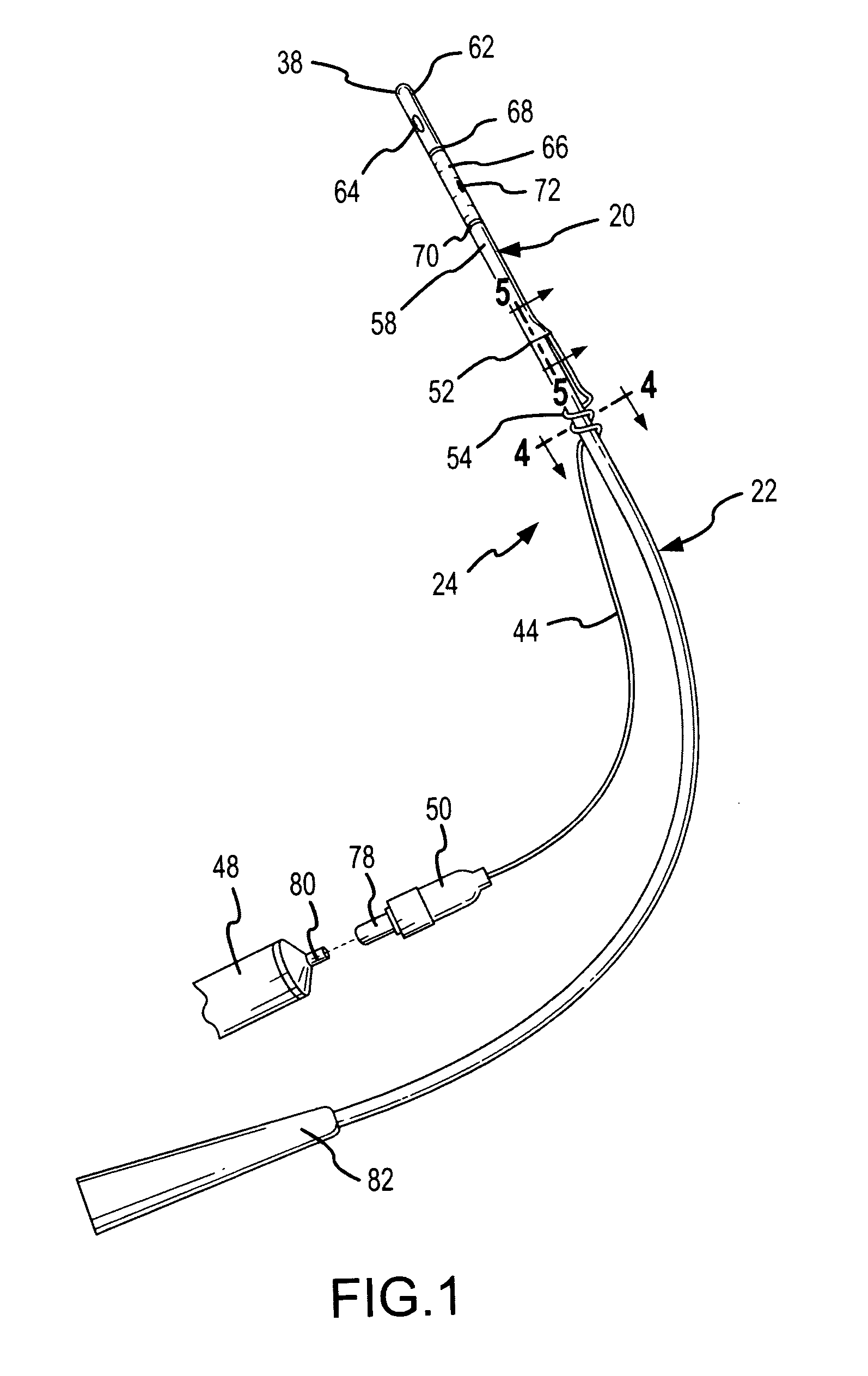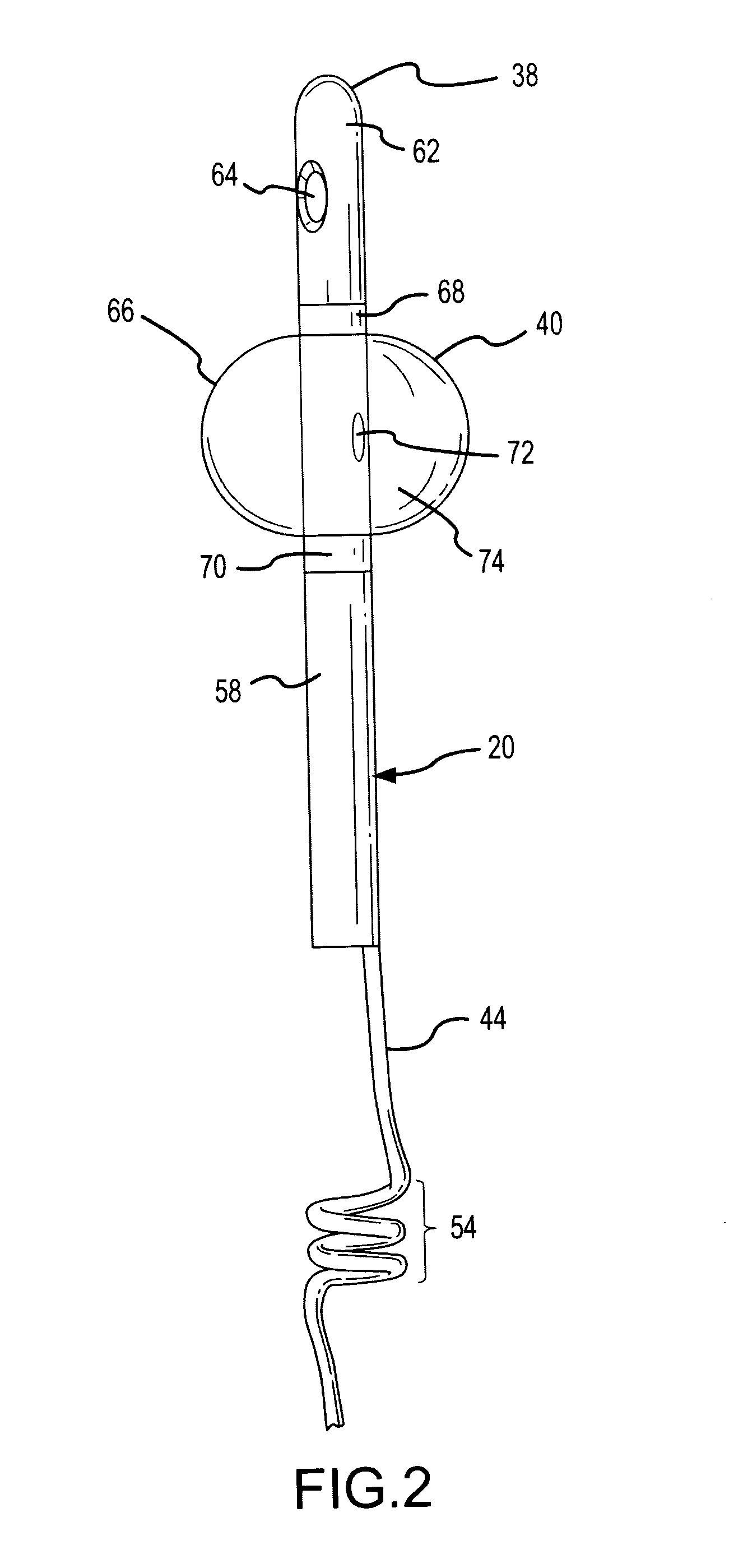Partial-length, indwelling prostatic catheter using coiled inflation tube as an anchor and methods of draining urine and flushing clots
a prostatic catheter and indwelling technology, applied in the field of partial length indwelling prostatic catheters using coiled inflation tubes as anchors and methods of draining urine and flushing clots, can solve the problems of reducing the service life of the patient, and reducing the difficulty of discharging urine, so as to reduce pain or discomfort, facilitate the retention of partial length indwelling catheters in the desired location, and minimize the discomfor
- Summary
- Abstract
- Description
- Claims
- Application Information
AI Technical Summary
Benefits of technology
Problems solved by technology
Method used
Image
Examples
Embodiment Construction
[0033] An indwelling catheter 20 which incorporates the present invention is shown in FIG. 1. The indwelling catheter 20 connected to an insertion tool 22, to form a catheter-tool assembly 24 which allows the catheter 20 to be inserted into a urinary tract 26 of a human being, as shown in FIG. 6. Once inserted, the insertion tool 22 is disconnected or separated from the indwelling catheter 20 to leave the catheter 20 dwelling or remaining within a prostatic urethra 28 within a prostate gland 30, as shown in FIG. 9. In its indwelling use position shown in FIGS. 8 and 9, the catheter 20 drains urine from a bladder 32 through the prostatic urethra 28 within the prostate gland 30 to a position distal of a urinary sphincter muscle 34. When the urinary sphincter muscle dilates, the urine drains out into and through an external urinary canal 36 of the urinary tract 26.
[0034] The catheter 20 will typically be left in the indwelling position shown in FIG. 9 for a number of days or weeks to ...
PUM
 Login to View More
Login to View More Abstract
Description
Claims
Application Information
 Login to View More
Login to View More - R&D
- Intellectual Property
- Life Sciences
- Materials
- Tech Scout
- Unparalleled Data Quality
- Higher Quality Content
- 60% Fewer Hallucinations
Browse by: Latest US Patents, China's latest patents, Technical Efficacy Thesaurus, Application Domain, Technology Topic, Popular Technical Reports.
© 2025 PatSnap. All rights reserved.Legal|Privacy policy|Modern Slavery Act Transparency Statement|Sitemap|About US| Contact US: help@patsnap.com



